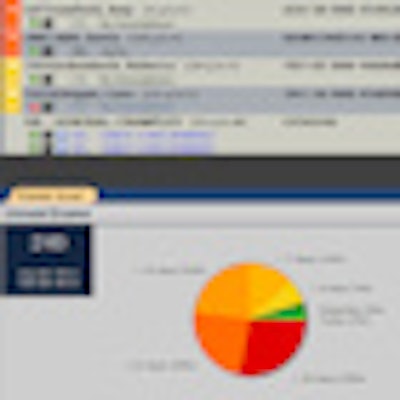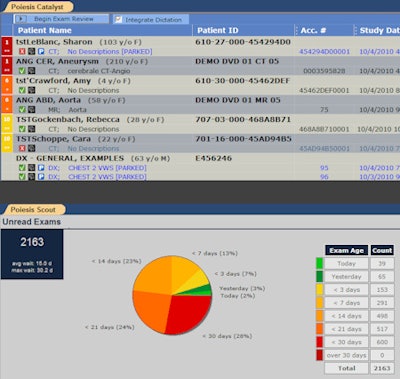
Some PACS watchers believe the next generation of PACS software will focus on workflow and quality enhancements, including expanded use of business intelligence tools. Poiesis Informatics is one company aiming to facilitate that future.
Founded by former members of the radiology informatics group of the University of Pittsburgh Medical Center, Poiesis aims to provide software that yields an improved workflow experience, including interoperability between disparate information systems.
"Our role is understanding and looking at the workflow in its entirety and then understanding how users work to create solutions that bring more information to their fingertips without having to use multiple systems," said co-founder and president Claudine Martin. "[We also want to] lower the hassle barrier, and all of that really speaks to the idea of an optimized workflow experience, looking at improvements in efficiency, productivity, quality, and safety."
Other Poiesis founders include University of Pittsburgh veterans David Lionetti and Jeremy Richardson. Both are serving as senior software engineers, and all the founders served under PACS pioneer Paul Chang, MD, during his tenure as head of radiology informatics at the university. Chang co-founded PACS firm Stentor, which was purchased by Philips Healthcare of Andover, MA, in 2005.
Pittsburgh-based Poiesis was formed in September 2007, initially focusing on software development and consulting services such as a workshop for Philips iSite users. At next month's 2010 RSNA meeting in Chicago, however, Poiesis will make its exhibitor debut, highlighting its Workflow Orchestration Suite.
Designed to work with third-party PACS software, the suite includes four modules: Catalyst, Fluency, Scout, and Discover.
Catalyst is an enterprise worklist application that offers a consolidated view of multisite and multivendor environments, according to the firm. Utilizing a technology framework that stores, analyzes, and processes data based on business intelligence, Catalyst allows users to distribute workload based on customized business rules, Poiesis said.
Using HL7, Catalyst accesses patient data from disparate systems such as an electronic medical record (EMR) or RIS, enabling radiologists to view the clinical content they need to get a patient's complete history, the company said. Other features include advanced exam filtering for displaying only the exams that are ready for interpretation, and the ability to "park" exams that aren't ready yet.
Fluency is a speech recognition-driven reporting and clinical documentation package that utilizes speech recognition engine from M*Modal of Pittsburgh. It also supports both self-editing and transcription-based workflow models, the company said.
Digitized reports are stored as structured content, which is useful for organizations to monitor core clinical performance measures, according to the firm.
The third module, Scout, is a business analytics tool designed to provide institutions with statistical measures to monitor and improve operational performance. Scout has the ability to recognize trends and provide forecasts using graphical data presentations, the company said.
Scout also offers customizable, role-based dashboards to provide users with the current state of their department. Proactive rules-based monitoring and notification functionality also aid in anticipating potential failures before they become serious issues, according to Poiesis.
 |
| Image courtesy of Poiesis Informatics. |
Discover, the suite's final module, is a clinical search and discovery tool designed to mine meaningful data stored in disparate systems, according to the firm.
Poiesis will retain strong ties with Chang, who currently serves as a medical advisor. In addition, the company has formed a research and development partnership with Chang's current institution, the University of Chicago Medical Center. The relationship will allow the firm to begin testing and further develop its workflow software within the institution's radiology informatics department.
While it is open to OEM relationships, Poiesis currently distributes its own software, Martin said. The company has 12 customers to date, including the University of Chicago Medical Center, Kaiser Permanente of Northern California, Henry Ford Health System in Michigan, and the University of Mississippi Medical Center in Jackson.
"The question that everybody is thinking about these days is, 'How do I do more with less?' " Martin said. "That's really the area that we're trying to look at and try to solve."
By Erik L. Ridley
AuntMinnie.com staff writer
October 13, 2010
Related Reading
What Generation Y radiologists want: the PACS of 2015, September 22, 2010
PACS: A culprit in radiology commoditization? June 9, 2010
SIIM: Healthcare IT industry lags behind consumer industry IT, June 5, 2010
SIIM speakers describe new frontier of business analytics, June 4, 2010
SIIM opening session highlights advances driving informatics, June 3, 2010
Copyright © 2010 AuntMinnie.com




















